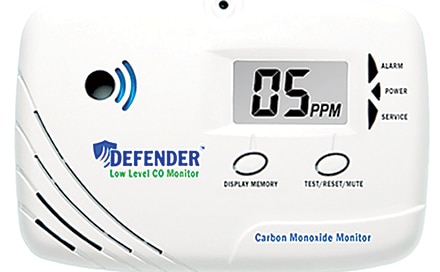
Unfortunately, if your heat exchanger has hairline cracks invisible to the naked eye, you run the risk of odorless, poisonous carbon monoxide entering your home. Hairline cracks become a problem when the gas is burning, and the crack becomes larger in the heat.
You might think to yourself, “But I have a carbon monoxide alarm in my home, we’ll be ok.” Most people think a carbon monoxide alarm is all they need to ensure their safety. However, all UL listed alarms will only react to readings above 70 parts per million.
While zero carbon monoxide is preferred, 70PPM is considered unsafe for infants, young children and the elderly. At that level or just below, you can already be experiencing symptoms like headache, dizziness and fatigue.
A much better option is a carbon monoxide monitor, a device typically used in boats and other marine vessels with engines that produce carbon monoxide. These sensitive monitors will notify you of any carbon monoxide levels of 5PPM or more.

First, it’s better to make sure there are no leaks to begin with, which is why we perform a full inspection and a combustion analysis with every heating system tune-up. For your family’s safety and peace of mind, consider scheduling a complete precision tune-up for only $68 for a limited time, a $40 savings over the normal price of $108.
Call us at 470-223-1176 to get details on our special tune-up offer, maximize your energy efficiency, lower your utility bills and protect your family.

